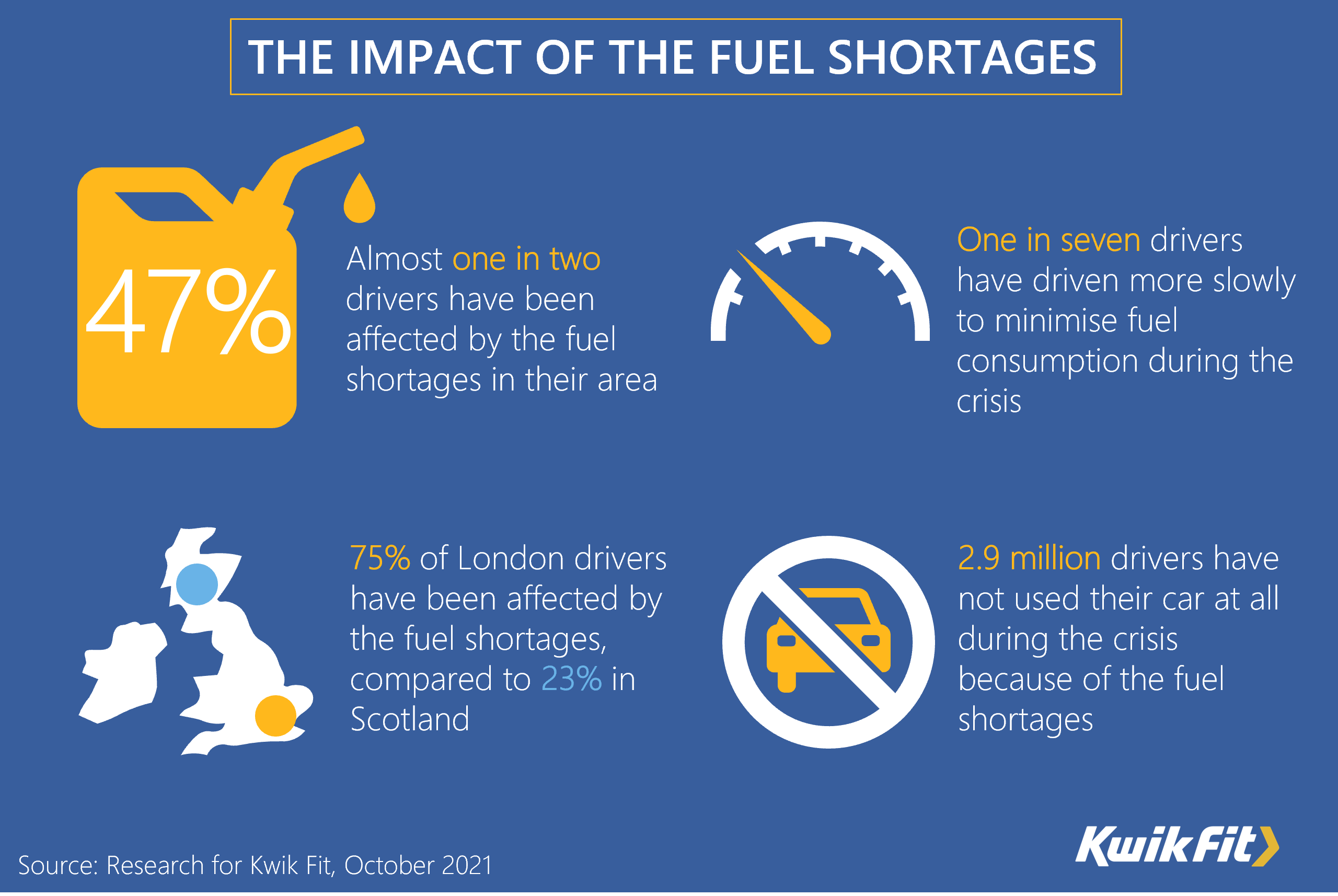
Fuel supply problems have affected one in two drivers
With the fuel shortage appearing to ease in most regions, except London and the South East – new figures reveal how many drivers have been affected since the crisis began.
Research released by Kwik Fit, reveals that the fuel problems have had an impact on almost half (47%) of the nation’s drivers. The burden has fallen most heavily on the young, with 62% of drivers under 34 affected, compared to 38% of those over 55. The research found that across the country, 8.5 million drivers have decided not to make at least one car journey which they otherwise would have taken, while some 2.9 million motorists say they have not used their car at all because of the fuel shortage.
The figures reflect the reports of longer lasting problems in London and the South East. In the capital, 75% of drivers say they have been affected, followed by 61% in the East of England and 54% in the South East. In Scotland, the picture is the reverse of London’s – 77% of drivers say they have been unaffected by fuel shortages, and in the North East 71% of motorists have felt no impact.
The Kwik Fit research found that driven by necessity, many drivers have changed their behaviour. One in seven drivers (14%) say they have driven more slowly to minimise their fuel consumption, while 11% have replaced a car journey by travelling by bike or on foot. One in 12 (8%) say they have switched to public transport for a journey instead of using their car and around one in 25 (4%) have car shared on a journey they would have otherwise taken alone.
Roger Griggs, communications director at Kwik Fit, said: “There have been differences of opinion over the causes of the fuel supply problems and how they could have been avoided, but it’s clear from this research that there needs to be a robust plan for the longer term. With half of all drivers being impacted by local shortages it’s going to be unsustainable for people’s work, family and social lives if these issues are repeated.”
While the supply of fuel to filling stations is out of drivers’ control, there are some measures that they can take to maximise fuel efficiency. Kwik Fit advises that when thinking about fuel consumption motorists consider their car from top to bottom and front to back.
- Top – remove any roof bars, racks, bike carriers or roof boxes when they are not being used. These cause significant drag and ruin fuel economy
- Bottom – ensure tyres are at the correct pressure. Underinflated tyres increase rolling resistance and therefore fuel consumption (as well as compromising handling and safety)
- Front – don’t overwork the engine. As 14% of drivers say they have done, be lighter on the accelerator, and try to anticipate when needing to brake. Generally, smoother motoring – leaving space and maintaining momentum – will improve fuel efficiency
- Back – empty the boot. Extra weight requires extra energy to get moving – if something is not needed for the journey, leave it at home
